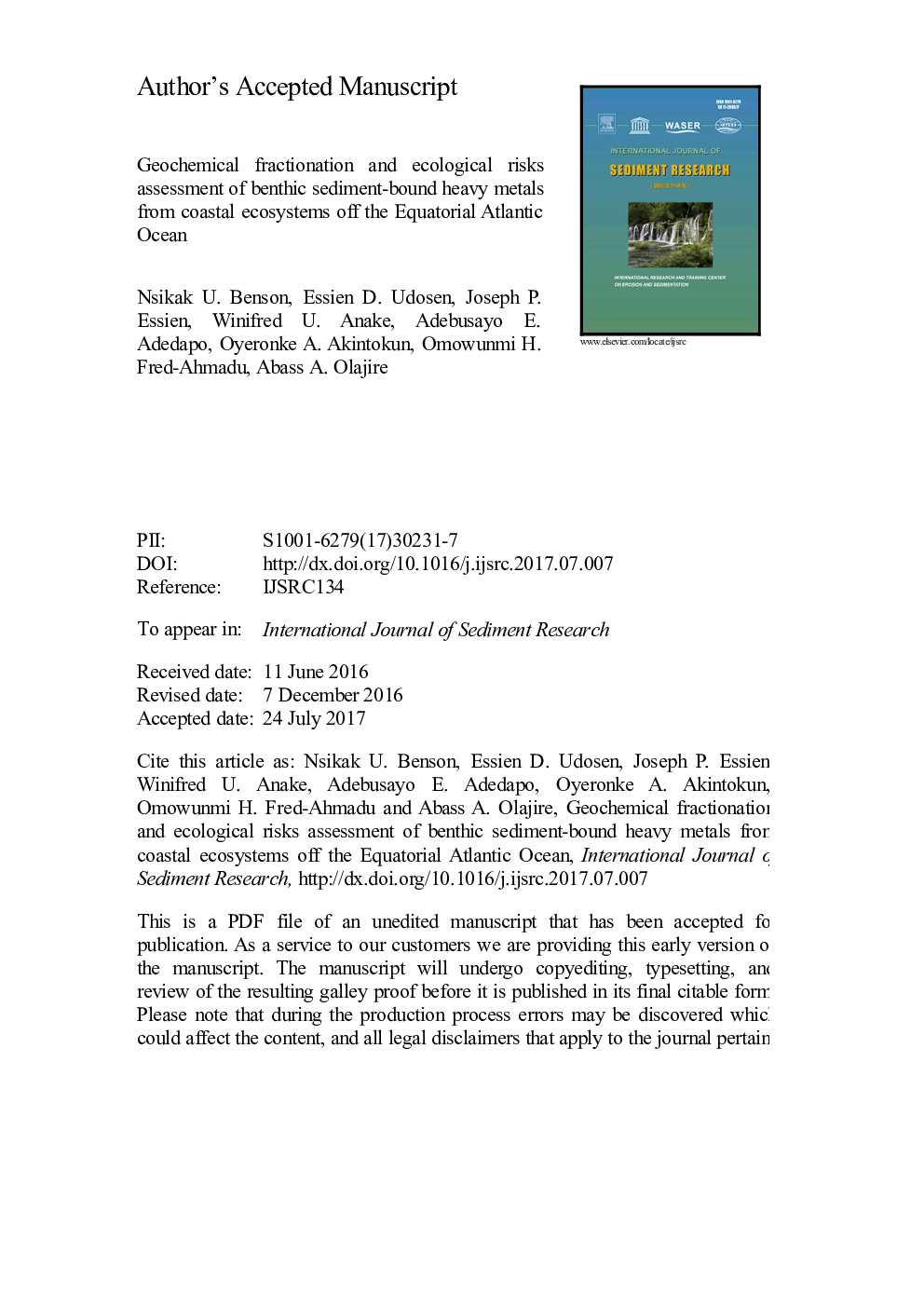| Article ID | Journal | Published Year | Pages | File Type |
|---|---|---|---|---|
| 8911161 | International Journal of Sediment Research | 2017 | 31 Pages |
Abstract
This study determines the pollution, fractionation, and ecological risks of sediment-bound heavy metals from coastal ecosystems off the Equatorial Atlantic Ocean. Contamination Factor (CF), pollution load index (PLI), and geoaccumulation index (Igeo) were used to assess the extent of the heavy metal pollution, while the potential ecological risk was evaluated using the risks assessment code (RAC) and HÃ¥kanson potential ecological risk. The analysis revealed concentrations (mg/g, dw) of the cadmium (Cd), chromium (Cr), copper (Cu), nickel (Ni), and lead (Pb) in sediments for wet and dry seasons vary from 4.40-5.08, 14.80-21.09, 35.03-44.8, 2.14-2.28, and 172.24-196.39, respectively. The results also showed that the metal fractionation percentages in the residual, oxidizable, and reducible fractions are the most significant, while the exchangeable and carbonate bound trace metals are relatively low. The RAC values indicate no risk for Cd and Ni and low risk for other metals at all the studied sites during both seasons. Potential ecological risk analysis of the heavy metal concentrations indicates that Cd had high individual potential ecological risk, while the other metals have low risk at all investigated sites. The multi-elemental potential ecological risk indices (R1) indicate high ecological risk in all the ecosystems.
Related Topics
Physical Sciences and Engineering
Earth and Planetary Sciences
Geochemistry and Petrology
Authors
Nsikak U. Benson, Essien D. Udosen, Joseph P. Essien, Winifred U. Anake, Adebusayo E. Adedapo, Oyeronke A. Akintokun, Omowunmi H. Fred-Ahmadu, Abass A. Olajire,
